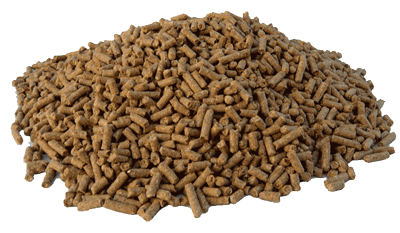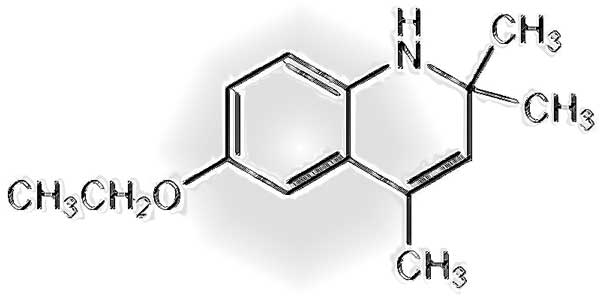
Shedding light on industry practices
Most horse feeds are made with poorly digestible ingredients for equine digestive systems, and/or materials that are heavily contaminated with mold spores, dirt, or fermentative by products from biodiesel fuels that are actually toxic to horses.
Beet pulp, wheat middlings, soybean hulls, corn distillers dried grains with solubles all fit that bill. Soybean meal, and flaxseed meal are estrogenic, and soybean meal and dehydrated alfalfa meal are thyrotoxic. It can be a challenge to find the best feed for your horse while wading through all the full color attractive packaging out there, paid for with the high profits generated by selling cheap filler ag wastes in pretty bags.
Commercial Horse Feed
Adequate and proper nutrition is essential. Every nutrient is necessary for the effectiveness of every other nutrient. If one nutrient is missing or deficient, all other nutrients are affected. Today’s processed horse feed is nutritionally deficient, lacking proper nutrients because of how the ingredients--many in incorrect forms--are grown, processed, transported, stored, treated and prepared. In addition, it damages the horse’s body (cells) because it retains toxic residues from pesticides and other agricultural chemicals. A few years ago, a massive recall of pet food took place in this country. Thousands of dogs and cats were sickened or died from consuming commercially processed feed tainted with the chemical additive melamine, a cheap and dangerous way to raise the protein level of these commercial feeds. Keeping in mind that horses are similarly classified as companion animals (not animals raised for human consumption), their feed is processed under the same (lack of) regulation and oversight as feed for our other pets.
In the typical feeds of today, manufacturers usually follow outdated models of the levels of minerals that are needed , falling short of what is actually needed in the real world of today. Due to the deliberate contamination of food crops with fertilizers used to grow them, mineral ratios have been seriously skewed. Vita Royal balances these skewed mineral ratios, by eliminating manganese, iron and high calcium, and then by adding extra magnesium, which most humans and their animals are testing extremely deficient of. We also use higher iodine to help balance the increasing levels of arsenic in drinking water, foods and feeds, and the highest bioavailability mineral forms of amino acid chelates.
Fillers
Standard equine feed tag labels now read like a jumble of unrecognizable ingredients, listing such obscure items as "processed by-products." For our horse feeding purposes, these byproducts can be defined as those items that provide little to no real food value of the kind we are looking for today. In addition, those items contain more harmful residues or have more toxic effects from various residues than their nutritional, feed-value worth. Some by-products such as "wheat middlings," which are the leftover cleanings and screenings of the wheat that goes into human foods, are so laden with dust, dirt and mold spores that they resemble granary floor sweepings. These useless and filthy by-products and fillers serve no purpose other than diluting our horse’s digestive juices and challenging his gut. The size of the horse’s total digestive content, packed with useless fillers, is not reduced on its way toward elimination because so little of it can be absorbed as nutrition. It continues to expand the gut - all the way out - making more manure to clean up and leaving the horse with a prominent “hay belly.”
If the horse is insulin resistant (IR), the owner should also be aware that pesticide-laden hulls of all kinds are being used as fillers for the new low NSC feeds and as components of many popular supplements. Hulls are quite indigestible and are listed by the USDA as low nutritive agricultural wastes or by-products. Diluting feeds with this residue does reduce the NSC level, but, when consumed, this junk dilutes and diverts the gut’s digestive enzymes, so that correct processing of the nutritional portions of the feed is impaired. The reduced nutrition that results further weakens the already compromised body of an IR horse.
Preservatives

Of course, along with these fillers and by-products comes the need for high levels of strong chemical preservatives. Ethoxyquin, common in commercial horse feeds, is such a powerful preservative that it is rarely found in human food. First used as a rubber preserver and stabilizer, Ethoxyquin found its way into companion animal feed as a cheap and excellent source of preventing rancidity for periods as long as a year. It is classified as a toxic chemical with a rating of three (on a scale of 1-6) with six denoting the highest toxicity. Less than seven drops will produce death. Ethoxyquin is approved for use in pet food at the rate of 150 ppm. If a manufacturer did not, itself, add Ethoxyquin to its feed during production, it does not have to list the preservative on its product label. However, every individual ingredient in the final bag of horse feed could be preserved with this dangerous preservative, compounding the total amount in the final product.
Since we do not eat horses in this country, they are not an agricultural edible commodity, and so the laws regulating what can and cannot be put into horse, cat and dog foods of animals not destined for the human food market is significantly different than for animals destined for slaughter like cows, chickens and pigs. Essentially, it is "anything goes" for the pet food market, including horses. Back in 1976, there was a law passed that allowed industrial wastes to be "recycled" in to products that is called with tongue in cheek, The Hazardous Waste Recycling Act" that allow contaminated wastes that may contain some minerals to be re-listed as "trace minerals" and added to pet foods. That is why, in a recession when poor and elderly people have a hard time with food bills and turn to cat food tuna fish and other pet foods, the federal government issues public media warnings that the quality of cat tuna is not up to human standards, but they fail to say why however.
Additives
These industrial and pharmaceutical wastes also are being "recycled towards a profitable end" in the form of artificial colors, artificial flavors and artificial fragrances that enter our human market in everything from medicines to foods and drinks to heavy use in cosmetics. This is why you heard of no significant prosecutions or much more than a slap of hands to pet food manufacturers when so many dogs and cats died from toxic ingredients from China. It was legal all along. The only reason that dogs and cats died en masse and not horses, is because small animals are totally dependent on a contaminated food source, while horses graze or eat hay to dilute. That practice of deliberate adulteration still goes on. They just hope they don't go overboard again and kill of a number of pets.
China is well aware of the negative publicity of its products and so goes to some length to effectively "launder" shiploads of Ag products through Western countries that end up in the US with country of origin being, on paper, the country of last import to the US. How can they do this? Cost, pure and simple... labor and production in China is so cheap that they can afford to ship quantities through some other country and then here to the US and still be able to compete price wise. It has been done for a while now. So if you see your product like beet pulp come from Europe someplace, that is likely the country of laundering, the country it was last brought through and not the true country of origin, the country where it was grown.
Other Ag Wastes:
Beet Pulp -contaminated with herbicides and pesticides, that are actually concentrated in the sugar removal process, as they are fat soluble and not water soluble and found to be not an efficient feed for mono-gastric animals like horses anyway, and from our experience, is a significant contributor to hind gut ulcers and all sorts of neurological hind end compromises including EPM.
Ground Corn Cobs -
can contribute to allergies in horses. Much of the corn grown today is GMO biodiesel and not a feed crop, and also more susceptible to molds. All GMO crops are showing increased susceptibility to pests and molds. Biodiesel corn, contaminated with molds enough to cause problems in the fermentation process for alcohol and biodiesel often find their way into the dumping grounds of horse feeds, unfortunately, where the laws are so loose or non existent for quality.
Wheat Middlings or Wheat Midds -
the broken pieces of wheat that were screened out of the whole wheat during the cleaning process, complete with high levels of dirt and mold spores which are known to be highly inflammatory. Also the wheat proteins gluten and gliadins, cause inflammatory and the auto-immune syndromes of Chrones, IR, diabetes, epilepsy, IBS (irritable bowel syndrome) in horses, humans, dogs and cats alike.
Brewers Mash -
by products of the brewing of beers, meads and some liquors, mostly consisting of wheat, barley and hops, which also contain auto-immune inducing glutens and gliadins.